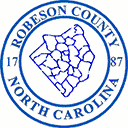The Importance of Agricultural Literacy
go.ncsu.edu/readext?419622
en Español / em Português
El inglés es el idioma de control de esta página. En la medida en que haya algún conflicto entre la traducción al inglés y la traducción, el inglés prevalece.
Al hacer clic en el enlace de traducción se activa un servicio de traducción gratuito para convertir la página al español. Al igual que con cualquier traducción por Internet, la conversión no es sensible al contexto y puede que no traduzca el texto en su significado original. NC State Extension no garantiza la exactitud del texto traducido. Por favor, tenga en cuenta que algunas aplicaciones y/o servicios pueden no funcionar como se espera cuando se traducen.
Português
Inglês é o idioma de controle desta página. Na medida que haja algum conflito entre o texto original em Inglês e a tradução, o Inglês prevalece.
Ao clicar no link de tradução, um serviço gratuito de tradução será ativado para converter a página para o Português. Como em qualquer tradução pela internet, a conversão não é sensivel ao contexto e pode não ocorrer a tradução para o significado orginal. O serviço de Extensão da Carolina do Norte (NC State Extension) não garante a exatidão do texto traduzido. Por favor, observe que algumas funções ou serviços podem não funcionar como esperado após a tradução.
English
English is the controlling language of this page. To the extent there is any conflict between the English text and the translation, English controls.
Clicking on the translation link activates a free translation service to convert the page to Spanish. As with any Internet translation, the conversion is not context-sensitive and may not translate the text to its original meaning. NC State Extension does not guarantee the accuracy of the translated text. Please note that some applications and/or services may not function as expected when translated.
Collapse ▲Beginning with the industrial revolutions, which brought about great change in commerce and trade, the agricultural industry has evolved over the years. Thousands of Americans have abandoned the farm in pursuit of other opportunities. Of the 2.2 million farms across the United States, about 97 percent are operated by families comprised of individuals, partnerships, and family corporations, which represents around two percent of the population. In 1900, 41 percent of the population was employed in agriculture. Over the years, that number has been significantly reduced to 15 percent. Much like other industries in America, agriculture has experienced its own surplus of technology that has reduced the demand in workforce. The reduction of farm employment has had a direct correlation to the high level of agricultural illiteracy and misconceptions. Unfortunately, with more than two generations removed from the farm, a huge disconnect has been created between citizens and agriculture as we know it.
I often wonder if the growing knowledge gap is creating the negative perceptions of agricultural production. Studies from the Journal of Agricultural Education revealed that the more educated the individual, the fewer negative stereotypes the individual developed about agriculture. Unfortunately, there is no shortage of sources for misinformation about agriculture available to the average person in the information age in which we live. As they say, “Don’t believe everything you read on the Internet.”
So why the big issue? All citizens need to understand the economic, social, and environmental significance of agriculture. Food production is the basis of all civilization. We need a well-educated public to contribute to the success of a safe and affordable food system that will attempt to feed the expected nine billion people in this world by 2050. Though only a small percentage of our population is actively producing our food, we all have a responsibility as voters that affect agricultural policy related to trade, employment, and environmental issues. We also need policy makers who are agriculturally literate to create responsible regulation that supports such an important industry in our global economy.
U.S. agriculture also plays a major role in supporting other sectors of our economy. According to the American Farm Bureau Federation, one in three U.S. farm acres is planted for export. According to the United States Department of Agriculture (USDA) Economic Research Service, in 2014, each dollar of agricultural exports stimulated another $1.27 in business activity. That means the $150 billion of agricultural exports in the 2014 calendar year produced an additional $190.6 billion in economic activity for a total output of $340.6 billion. Agricultural exports required 1.13 million full-time civilian jobs, which included 808,000 jobs in the nonfarm sector the same year.
Society’s major challenge ahead is determining how to continue to feed a growing population on less land and with less resources. Maybe it’s time we focus more on agricultural education in our school systems to create a more literate public to meet this challenge. The National Academy of Science, Agricultural Education Committee, has stated that agriculture is too important a topic to be taught to only a relatively small percentage of students considering careers in agriculture and pursuing vocational agriculture studies. Some have suggested all high school graduates need to take at least one agricultural course to gain a basic understanding. I guess it all depends on how important we think agricultural literacy is to all mankind.
For more information, please contact Mac Malloy, Extension Field Crops Agent with North Carolina Cooperative Extension, Robeson County Center, at 671-3276, by E-mail at Mac_Malloy@ncsu.edu, or visit our website at //robeson.ces.ncsu.edu/.
NC State University and N.C. A&T State University are collectively committed to positive action to secure equal opportunity and prohibit discrimination and harassment regardless of age, color, disability, family and marital status, gender identity, genetic information, national origin, political beliefs, race, religion, sex (including pregnancy), sexual orientation, and veteran status. NC State, N.C. A&T, U.S. Department of Agriculture, and local governments cooperating.




